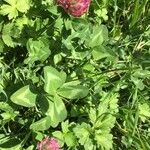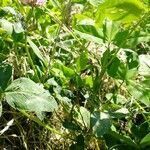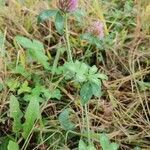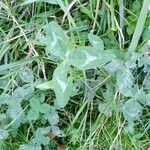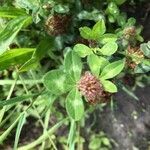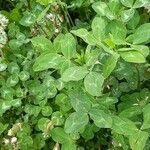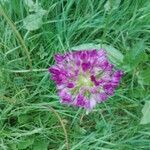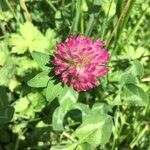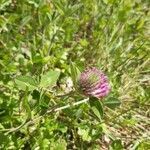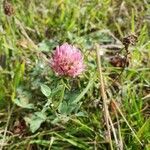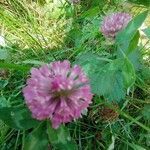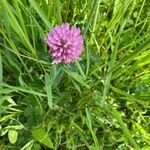Perennial herbs, sparsely villous or glabrescent. Stems numerous from crown, erect or ascending, 20-70 cm, stout, striate. Leaves palmately 3-foliolate, basal and cauline, long petiolate in lower leaves, shortly petiolate in upper leaves; stipules ovate-lanceolate, membranous, base adnate to petiole, apex acuminate-subulate; leaflets ovate-elliptic or obovate, rarely elliptic, 1.5-3.5(-5) × 1-2 cm, lateral veins 15, base broadly cuneate, margins obscurely serrulate, apex obtuse, rarely retuse. Flowers 30-70, in dense globose or ovoid, terminal, sessile to shortly pedunculate heads, subtended by involucre of stipules of reduced leaves. Calyx slightly pubescent or glabrous, veins 10; teeth subulate, unequal, lower tooth ca. 2 × others. Corolla purple, rarely pink or white, 12-14(-18) mm; standard spatulate, apex rounded, retuse. Ovary elliptic. Legume ovoid. Seed 1, yellow or brown, ovoid. Fl. and fr. May-Sep.
Short-lived perennial, ascending or suberect, to 8 dm, the stem appressed-hairy; stipules oblong, the free part short, abruptly narrowed to a short awn; lower lvs long-petioled, upper short-petioled to sessile; heads sessile or on peduncles to 2 cm, globose to round-ovoid; fls 13–20 mm; cal glabrous to sparsely pilose, the tube 3–4 mm, the lobes setaceous, one 4–7 mm, four 2–5 mm; cor magenta, varying to nearly white; standard obovate-oblong, equaling or a little longer than the oblong obtuse wings; 2n=14. Native of Europe, widely cult. and escaped in fields and roadsides nearly throughout temperate N. Amer. May–Aug.
A herb. It keeps growing from year to year. It grows up to 40 cm high. The stems are hairy. It has a single taproot. The leaves have 3 leaflets. The leaflets are smooth and oval. They have a pale V shaped mark. The flowers are purplish-mauve of pink. They are rounded. The pods have 1 seed.
